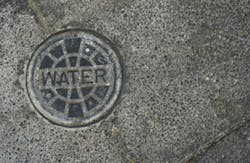The U.S. Environmental Protection Agency (EPA) released results of a survey showing that $384 billion in improvements are needed for the nation’s drinking water infrastructure through 2030 for systems to continue providing safe drinking water to 297 million Americans.
The EPA’s fifth Drinking Water Infrastructure Needs Survey and Assessment identifies investments needed over the next 20 years for thousands of miles of pipes and thousands of treatment plants, storage tanks and water distribution systems. The national total of $384 billion includes the needs of 73,400 water systems across the country, as well as American Indian and Alaska Native Village water systems.
“A safe and adequate supply of drinking water in our homes, schools and businesses is essential to the health and prosperity of every American,” said EPA Acting Administrator Bob Perciasepe, in a prepared statement. “The survey EPA released today shows that the nation’s water systems have entered a rehabilitation and replacement era in which much of the existing infrastructure has reached or is approaching the end of its useful life. This is a major issue that must be addressed so that American families continue to have the access they need to clean and healthy water sources.”
The survey, required under the Safe Drinking Water Act to be submitted to Congress every four years, was developed in consultation with all 50 states and the Navajo Nation. The survey looked at the funding and operational needs of more than 3,000 public drinking water systems across the United States, including those in Tribal communities, through an extensive questionnaire. In many cases, drinking water infrastructure was reported to be 50-100 years old.
The assessment shows that improvements are primarily needed in:
- Distribution and transmission: $247.5 billion to replace or refurbish aging or deteriorating lines
- Treatment: $72.5 billion to construct, expand or rehabilitate infrastructure to reduce contamination
- Storage: $39.5 billion to construct, rehabilitate or cover finished water storage reservoirs
- Source: $20.5 billion to construct or rehabilitate intake structures, wells and spring collectors


